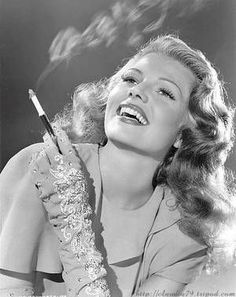My parents didn't smoke, but my chic aunt, always dressed to the nines, did. And she used a long black cigarette holder. My uncle smoked, so did my grandfather.
When my parents had parties, my sister and I could smell the cigarette smoke that wafted to the second floor. My mom had beautiful ash trays placed throughout the living room.
That was such a different time. But is it any surprise smoking was so popular when no one suspected it caused any harm, aside from a little throat irritation? Also, doctors were pushing smoking on an unsuspecting public. Take a look at the article below from History.com, "When Cigarette Companies Used Doctors to Push Smoking."
What cigarette do doctors says causes less throat irritation? In the 1930s and 40s, tobacco companies would happily tell you it was theirs. Doctors hadn’t yet discovered a clear link between smoking and lung cancer, and a majority of them actually smoked cigarettes. So in cigarette ads, tobacco companies used doctors’ authority to make their claims about their cigarettes seem more legitimate.“People started to get worried in the ‘40s because lung cancer was spiking; the lung cancer death rate was going through the roof,” says Martha Gardner, a history and social sciences professor at Massachusetts College of Pharmacy and Health Sciences. “People noticed that and were worried about it, but that didn’t mean they knew it was cigarettes.”
Yes, cigarettes did cause coughing and throat irritation. But companies used this to their advantage to promote their product as better than the competition. It wasn’t all cigarettes that gave you problems—it was just those other ones.
The first cigarette company to use physicians in their ads was American Tobacco, maker of Lucky Strikes. In 1930, it published an ad claiming “20,679 Physicians say ‘LUCKIES are less irritating’” to the throat. To get this number, the company’s ad agency had sent physicians cartons of Lucky Strike cigarettes and a letter asking if they thought Lucky Strikes were “less irritating to sensitive and tender throats than other cigarettes,” while noting “a good many people” had already said they were.
Unsurprisingly, many doctors responded positively to this biased, leading question, and Lucky Strike ads used their answers to imply their cigarettes must be medically better for your throat. In 1937, the Philip Morris company took that one step forward with a Saturday Evening Post ad claiming doctors had conducted a study showing “when smokers changed to Philip Morris, every case of irritation cleared completely and definitely improved.” What it didn’t mention was that Philip Morris had sponsored those doctors.
Philip Morris continued to advertise “studies” it sponsored through the 1940s, the decade that saw the introduction of penicillin. “The American public is thinking about medicine in such a positive way and science in a positive way,” says Gardner, who co-authored an American Journal of Public Health article about doctors in cigarette ads. “So framing it that way seems like it’ll help appeal to people.”
To this end, the R.J. Reynolds Tobacco Company created a Medical Relations Division and advertised it in medical journals. Reynolds began paying for research and then citing it in its ads like Philip Morris. In 1946, Reynolds launched an ad campaign with the slogan, “More doctors smoke Camels than any other cigarette.” They’d solicited this “finding” by giving doctors a free carton of Camel cigarettes, and then asking what brand they smoked.
By the mid-1950s, when tobacco companies had to confront good evidence that their products caused lung cancer, advertising strategies started to shift. “What happens is, all the different cigarette companies kind of work together to try to promote the idea that…we don’t know yet if it’s harmful,” Gardner says. In 1954, these companies released “A Frank Statement to Cigarette Smokers” arguing that research showing a link between cancer and smoking was alarming but not conclusive. Therefore, the companies were forming a research committee to investigate the issue.
After this, cigarette ads stopped featuring doctors because this was no longer a convincing tactic. Doctors were coming out against cigarettes, culminating in 1964 with the U.S. Surgeon General’s report that smoking causes lung cancer, laryngeal cancer and chronic bronchitis.
Still, tobacco companies continued to maintain, through their research committee, that there was still a “controversy” over whether cigarettes were unhealthy until 1998. That year, the Tobacco Institute and the Committee for Tobacco Research (as it was then known) disbanded in accordance with a lawsuit settlement.
Read the remainder of the article here. Nowadays all the ill effects of smoking are widely known to the public and anyone who chooses to smoke is well aware of the risks. Was any of this information new to you?
Thanks for visiting and have a great week!


.jpg)














